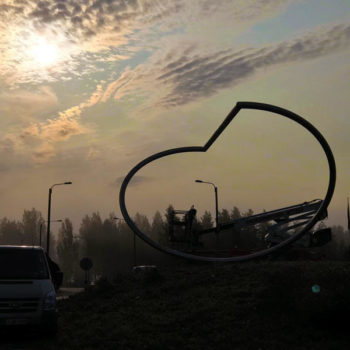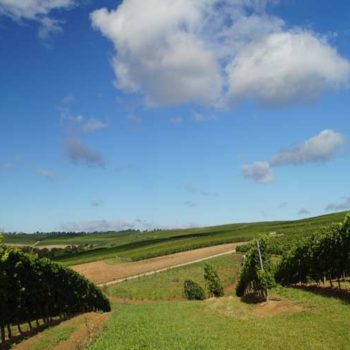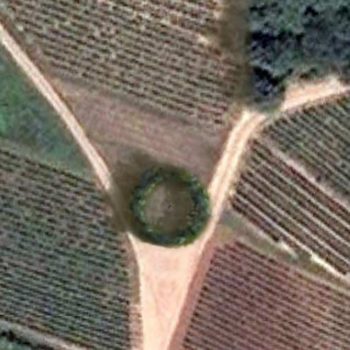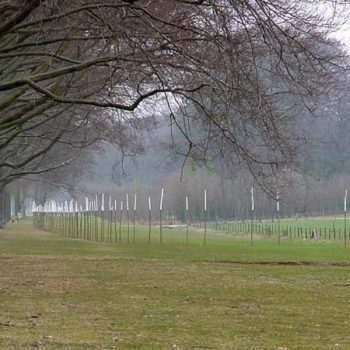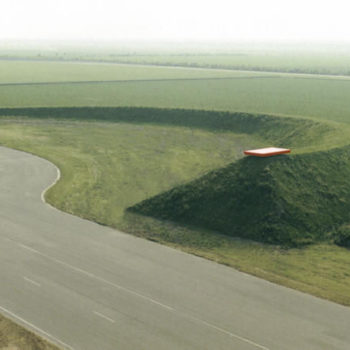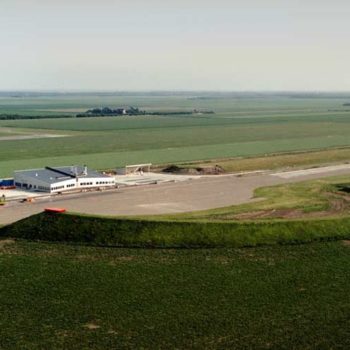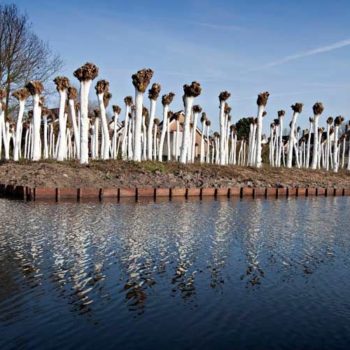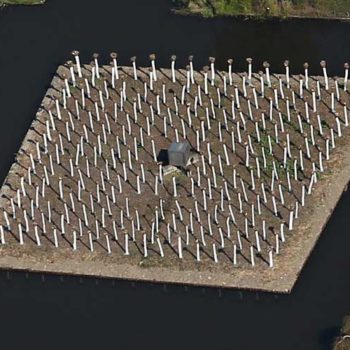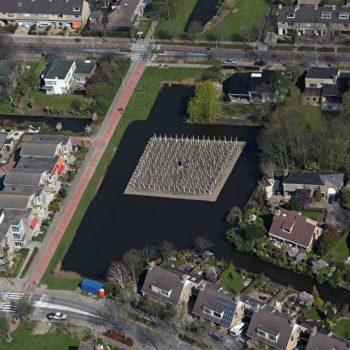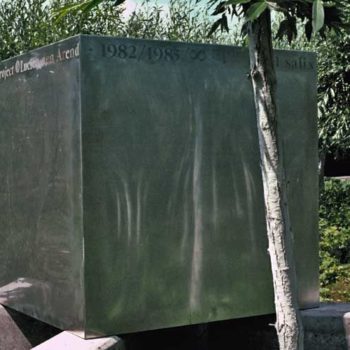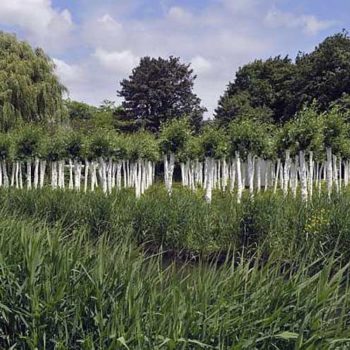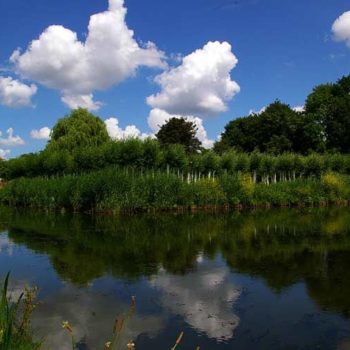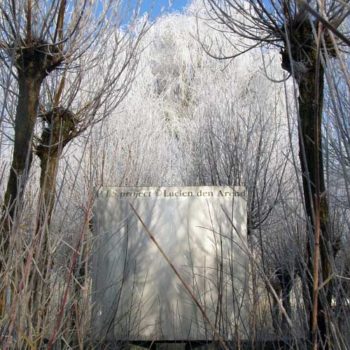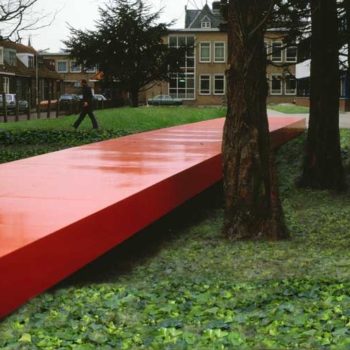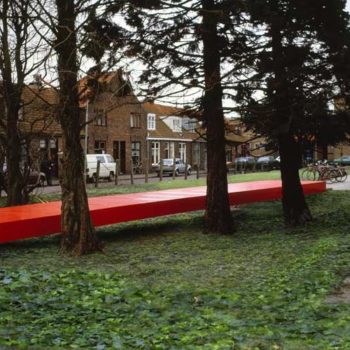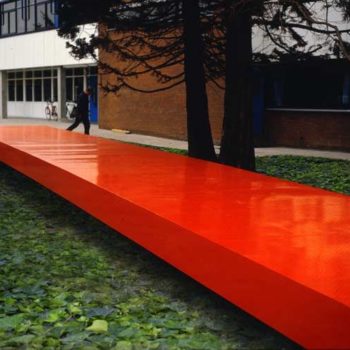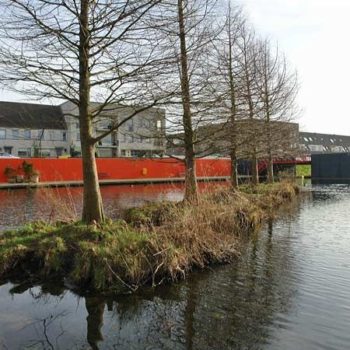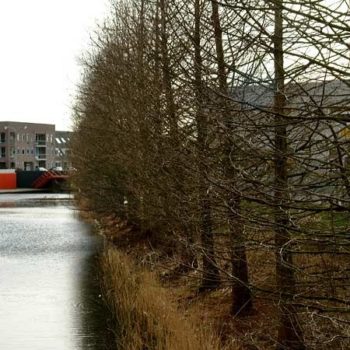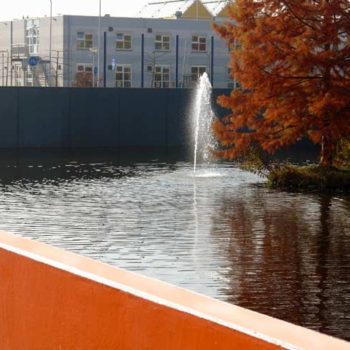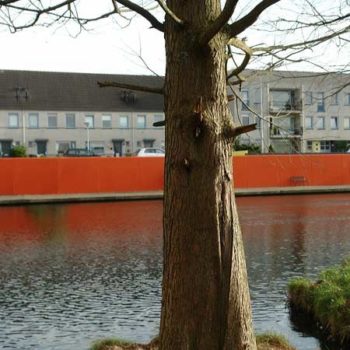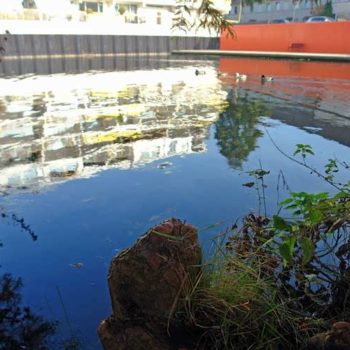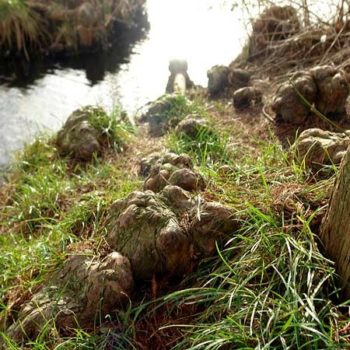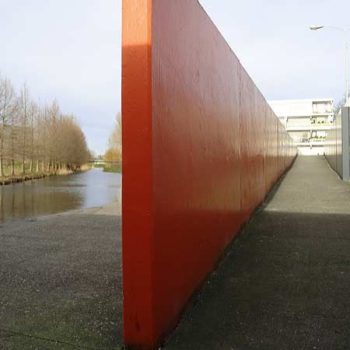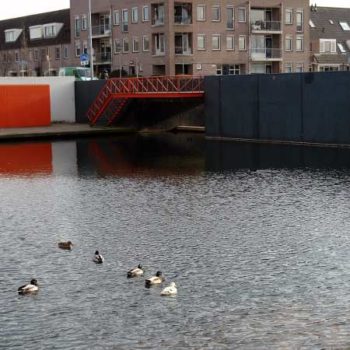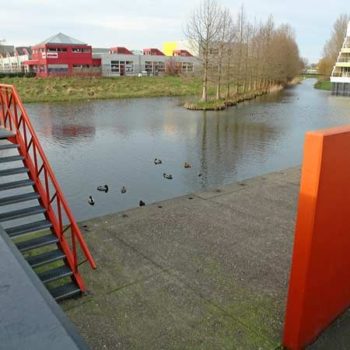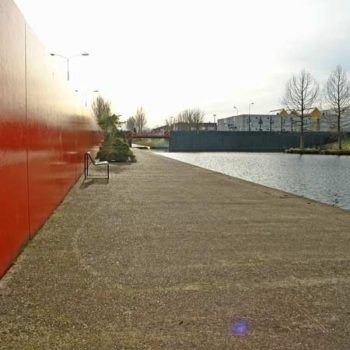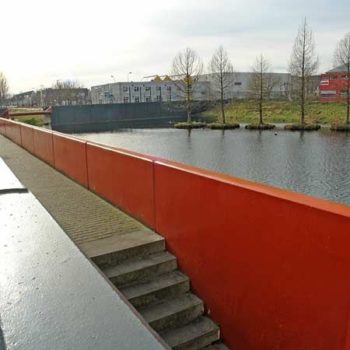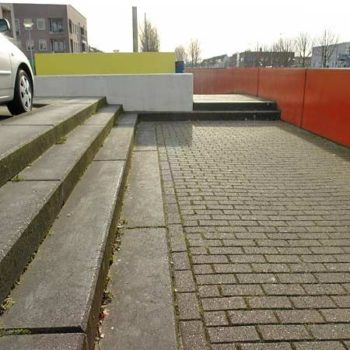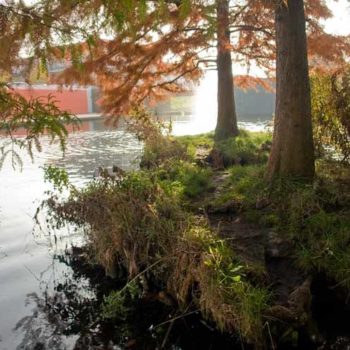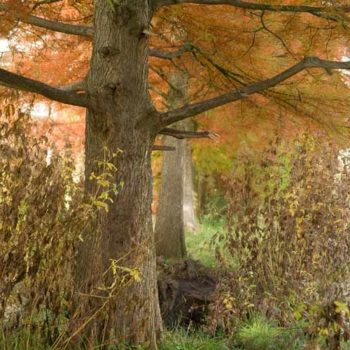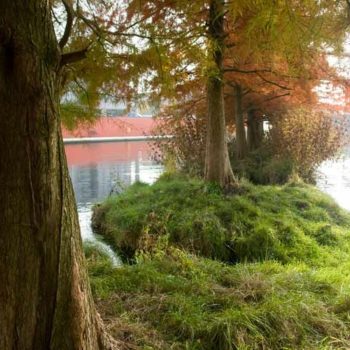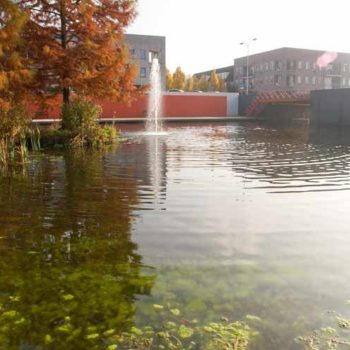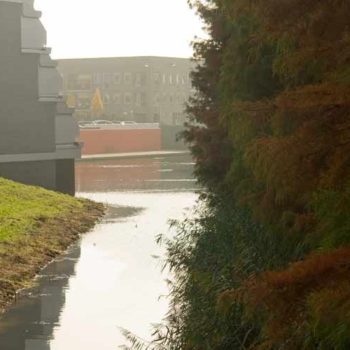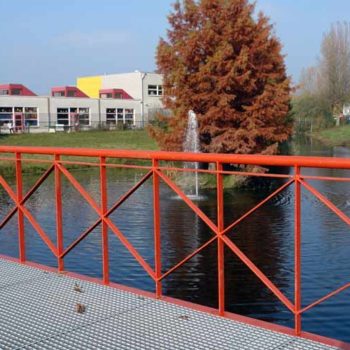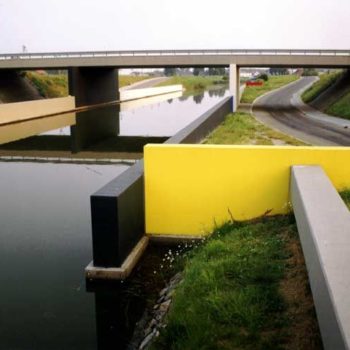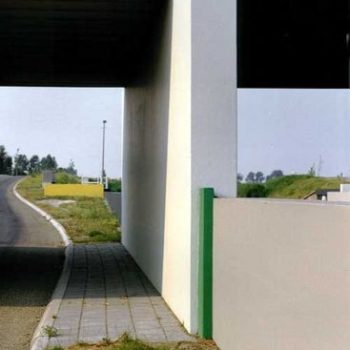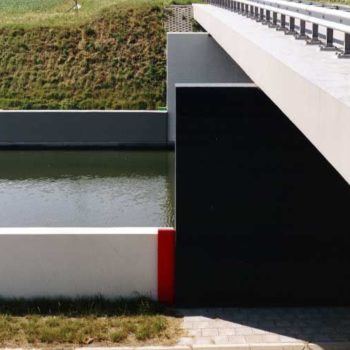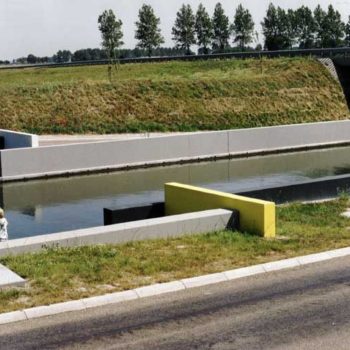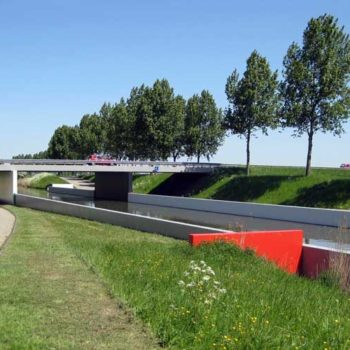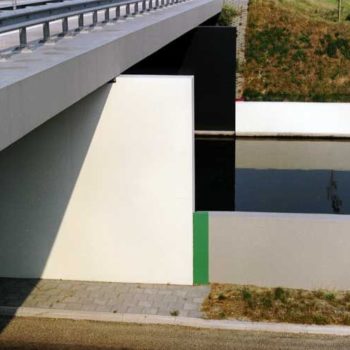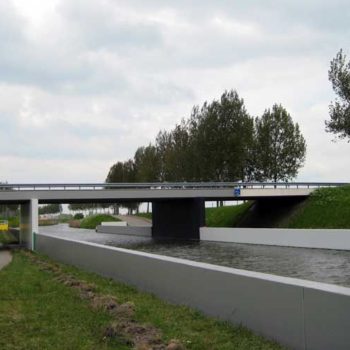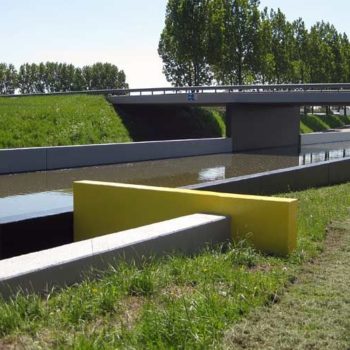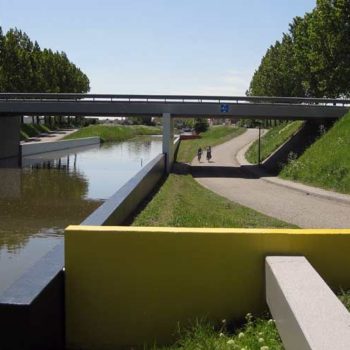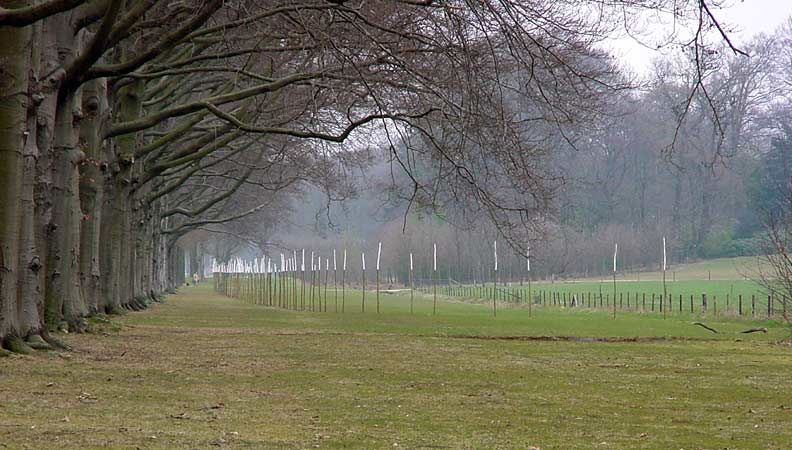
Loading…
Lucien Den Arend: trajectory for Rembrandt – 2002 – curvature length 250m – 100 Salix Alba (white willow) branches and three oaks
In 1999 the Dutch Sculptors' Association (Nederlandse Kring van Beeldhouwers) planned a sculpture exhibition - Landschap Partnerschap (Landscape Partnership) - to be held from April through September 2002 - on the estate of the Groeneveld Castle in Baarn, the Netherlands, the theme being the relationship between man and his environment.
Around the castle itself the English garden style prevails. The surrounding area was charted as plots of farmland according to a geometrical system, as is the layout of the greater part of Holland. The location of the gardens follows this mathematical system. But the style of the gardens themselves is informal and asymmetrical. There are the typical serpentine lakes, winding drives, and clusters of trees in lawns that, in England, echoes the wooded distance, pulling nature towards the house. But here in Holland the effect is the opposite, to a certain extent making the gardens into a oasis inside of the grid of the surrounding landscape. And Holland is flat!
Lucien den Arend, who was invited to participate in this project, chose a location towards the perimeter of the estate. With his installation he interacted with the axial geometry of the long tree lined lane which approaches the castle in its axis.
The location for the semi permanent installation is the area south-west of the lane, leading from a point between the two left trees (below) - the sculptor planted one hundred willows in a curved array leading the eye towards the group of three oaks.
Around the castle itself the English garden style prevails. The surrounding area was charted as plots of farmland according to a geometrical system, as is the layout of the greater part of Holland. The location of the gardens follows this mathematical system. But the style of the gardens themselves is informal and asymmetrical. There are the typical serpentine lakes, winding drives, and clusters of trees in lawns that, in England, echoes the wooded distance, pulling nature towards the house. But here in Holland the effect is the opposite, to a certain extent making the gardens into a oasis inside of the grid of the surrounding landscape. And Holland is flat!
Lucien den Arend, who was invited to participate in this project, chose a location towards the perimeter of the estate. With his installation he interacted with the axial geometry of the long tree lined lane which approaches the castle in its axis.
The location for the semi permanent installation is the area south-west of the lane, leading from a point between the two left trees (below) - the sculptor planted one hundred willows in a curved array leading the eye towards the group of three oaks.

